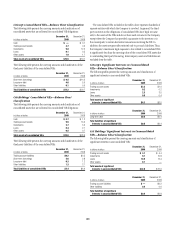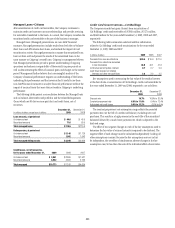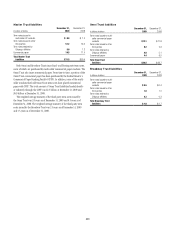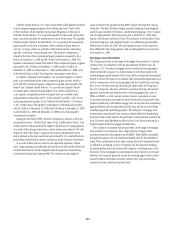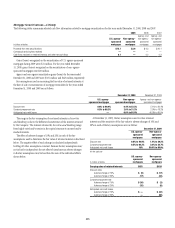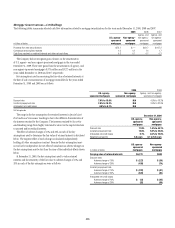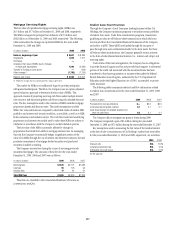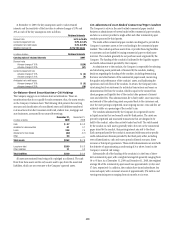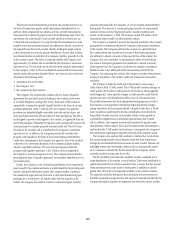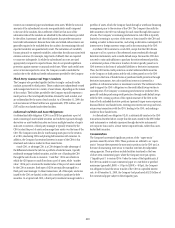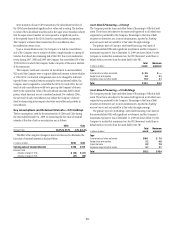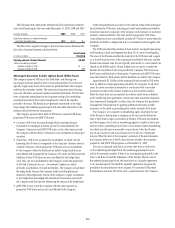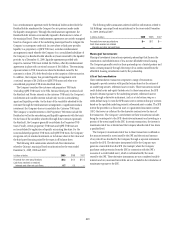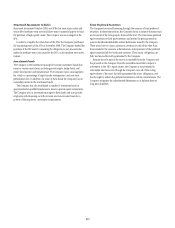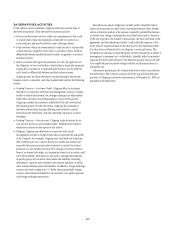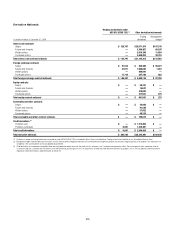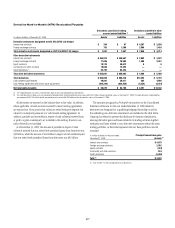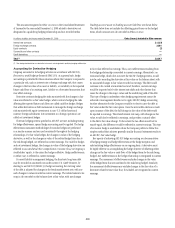Citibank 2009 Annual Report Download - page 219
Download and view the complete annual report
Please find page 219 of the 2009 Citibank annual report below. You can navigate through the pages in the report by either clicking on the pages listed below, or by using the keyword search tool below to find specific information within the annual report.209
The primary credit enhancement provided to the conduit investors is in
the form of transaction-specific credit enhancement described above. In
addition, there are generally two additional forms of credit enhancement
that protect the commercial paper investors from defaulting assets. First, the
subordinate loss notes issued by each conduit absorb any credit losses up
to their full notional amount. It is expected that the subordinate loss notes
issued by each unconsolidated conduit are sufficient to absorb a majority of
the expected losses from each conduit, thereby making the single investor
in the subordinate loss note the primary beneficiary. Second, each conduit
has obtained a letter of credit from the Company, which is generally 8–10%
of the conduit’s assets. The letters of credit provided by the Company total
approximately $3.4 billion and are included in the Company’s maximum
exposure to loss. The net result across all multi-seller conduits administered
by the Company is that, in the event defaulted assets exceed the transaction-
specific credit enhancement described above, any losses in each conduit are
allocated in the following order:
subordinate loss note holders, •
the Company, and •
the commercial paper investors.•
The Company also provides the conduits with two forms of liquidity
agreements that are used to provide funding to the conduits in the event
of a market disruption, among other events. Each asset of the conduit is
supported by a transaction-specific liquidity facility in the form of an asset
purchase agreement (APA). Under the APA, the Company has agreed to
purchase non-defaulted eligible receivables from the conduit at par. Any
assets purchased under the APA are subject to increased pricing. The APA is
not designed to provide credit support to the conduit, as it generally does not
permit the purchase of defaulted or impaired assets and generally reprices the
assets purchased to consider potential increased credit risk. The APA covers
all assets in the conduits and is considered in the Company’s maximum
exposure to loss. In addition, the Company provides the conduits with
program-wide liquidity in the form of short-term lending commitments.
Under these commitments, the Company has agreed to lend to the conduits
in the event of a short-term disruption in the commercial paper market,
subject to specified conditions. The total notional exposure under the
program-wide liquidity agreement is $11.3 billion and is considered in
the Company’s maximum exposure to loss. The Company receives fees for
providing both types of liquidity agreement and considers these fees to be on
fair market terms.
Finally, the Company is one of several named dealers in the commercial
paper issued by the conduits and earns a market-based fee for providing such
services. Along with third-party dealers, the Company makes a market in
the commercial paper and may from time to time fund commercial paper
pending sale to a third party. On specific dates with less liquidity in the
market, the Company may hold in inventory commercial paper issued by
conduits administered by the Company, as well as conduits administered by
third parties. The amount of commercial paper issued by its administered
conduits held in inventory fluctuates based on market conditions and
activity. As of December 31, 2009, the Company owned $70 million of the
commercial paper issued by its administered conduits.
The Company is required to analyze the expected variability of the conduit
quantitatively to determine whether the Company is the primary beneficiary
of the conduit. The Company performs this analysis on a quarterly basis.
For conduits where the subordinate loss notes or third-party guarantees
are sufficient to absorb a majority of the expected loss of the conduit, the
Company does not consolidate. In circumstances where the subordinate
loss notes or third-party guarantees are insufficient to absorb a majority
of the expected loss, the Company consolidates the conduit as its primary
beneficiary due to the additional credit enhancement provided by the
Company. In conducting this analysis, the Company considers three primary
sources of variability in the conduit: credit risk, interest rate risk and fee
variability.
The Company models the credit risk of the conduit’s assets using a
Credit Value at Risk (C-VAR) model. The C-VAR model considers changes in
credit spreads (both within a rating class as well as due to rating upgrades
and downgrades), name-specific changes in credit spreads, credit defaults
and recovery rates and diversification effects of pools of financial assets.
The model incorporates data from independent rating agencies as well as
the Company’s own proprietary information regarding spread changes,
ratings transitions and losses given default. Using this credit data, a Monte
Carlo simulation is performed to develop a distribution of credit risk for
the portfolio of assets owned by each conduit, which is then applied on
a probability-weighted basis to determine expected losses due to credit
risk. In addition, the Company continuously monitors the specific credit
characteristics of the conduit’s assets and the current credit environment to
confirm that the C-VAR model used continues to incorporate the Company’s
best information regarding the expected credit risk of the conduit’s assets.
The Company also analyzes the variability in the fees that it earns from
the conduit using monthly actual historical cash flow data to determine
average fee and standard deviation measures for each conduit. Because any
unhedged interest rate and foreign-currency risk not contractually passed
on to customers is absorbed by the fees earned by the Company, the fee
variability analysis incorporates those risks.
The fee variability and credit risk variability are then combined into a
single distribution of the conduit’s overall returns. This return distribution is
updated and analyzed on at least a quarterly basis to ensure that the amount
of the subordinate loss notes issued to third parties is sufficient to absorb
greater than 50% of the total expected variability in the conduit’s returns.
The expected variability absorbed by the subordinate loss note investors is
therefore measured to be greater than the expected variability absorbed by the
Company through its liquidity arrangements and other fees earned, and the


